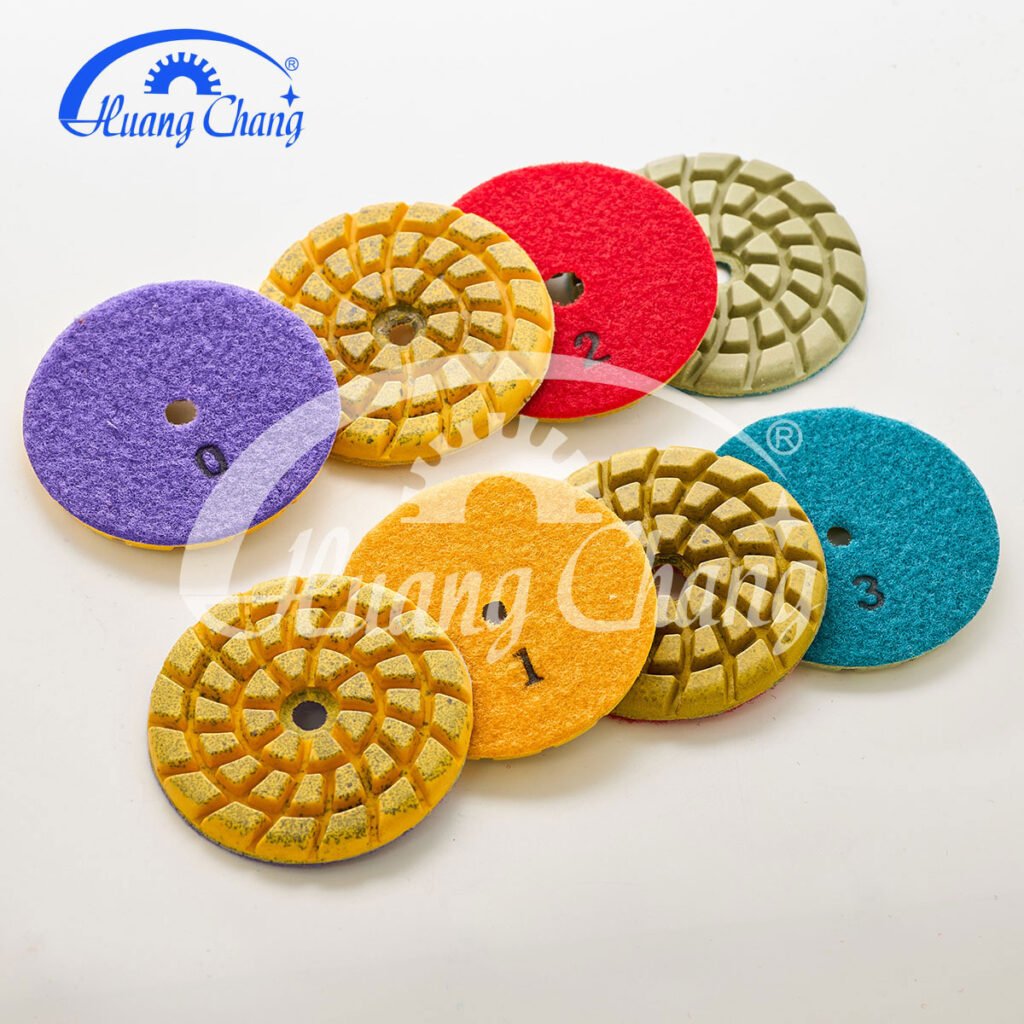
When it comes to achieving a flawless, professional finish on surfaces like concrete, stone, or tile, water polishing pads are an essential tool for both DIY enthusiasts and industry professionals. But what exactly is a water polishing pad, and how does it work? In this guide, we’ll explore the purpose of water polishing pads, their benefits, and how to use them effectively to achieve stunning results.
Understanding Water Polishing Pads: The Basics
A water polishing pad is a specialized abrasive tool designed for wet polishing applications. These pads are typically made from durable materials like resin or diamond-impregnated segments and are used with water to refine and polish surfaces. They are commonly employed in industries such as construction, flooring, and stone fabrication to create smooth, glossy finishes on materials like:
- Concrete : For polished concrete floors.
- Natural Stone : Including marble, granite, and travertine.
- Terrazzo : To enhance decorative aggregate floors.
- Tile and Countertops : For restoring or finishing ceramic, porcelain, or quartz surfaces.
The addition of water during the polishing process serves two critical purposes:
- Cooling : Prevents overheating of the pad and surface, which can cause damage.
- Lubrication : Reduces friction and helps remove debris, ensuring a cleaner and more efficient polishing process.
How Does a Water Polishing Pad Work?
Water polishing pads operate by combining mechanical abrasion with the cooling and lubricating properties of water. Here’s a step-by-step breakdown of how they function:
- Abrasive Action : The diamond or resin segments on the pad grind away imperfections, scratches, and rough spots on the surface.
- Progressive Grit Levels : Polishing pads come in various grit levels (e.g., coarse, medium, fine, and extra-fine). Starting with a lower grit removes material quickly, while higher grits refine the surface for a mirror-like finish.
- Water Integration : As the pad spins, water flows over the surface, washing away slurry (a mixture of dust and water) and keeping the area clean.
- Final Polish : The highest grit pads bring out the natural shine of the material, leaving it smooth and reflective.
This combination of abrasion, cooling, and lubrication ensures a high-quality finish without damaging the surface.
Benefits of Using Water Polishing Pads
- Enhanced Surface Quality
- Water polishing pads deliver superior results compared to dry polishing, especially for natural stone and concrete surfaces. The water prevents dust buildup, allowing the pad to maintain consistent contact with the material.
- Dust-Free Environment
- Wet polishing significantly reduces airborne dust, creating a healthier and safer workspace for operators.
- Increased Tool Longevity
- The cooling effect of water minimizes heat buildup, extending the lifespan of both the polishing pad and the grinding machine.
- Versatility
- Water polishing pads can be used on a wide range of materials, making them a versatile choice for various projects.
- Eco-Friendly Option
- By reducing dust and minimizing waste, wet polishing is a more environmentally friendly alternative to dry methods.
Types of Water Polishing Pads
There are several types of water polishing pads available, each designed for specific applications:
- Diamond Polishing Pads
- Best For : Heavy-duty polishing of hard materials like granite and concrete.
- Features : Diamond segments provide exceptional durability and cutting power.
- Resin Polishing Pads
- Best For : Fine polishing and achieving high-gloss finishes on softer materials like marble.
- Features : Resin pads are less aggressive than diamond pads, focusing on refinement rather than material removal.
- Hybrid Polishing Pads
- Best For : Projects requiring both durability and finesse.
- Features : Combine diamond and resin elements for versatility across multiple grit levels.
- Edge Polishing Pads
- Best For : Smoothing and polishing edges of countertops, tiles, and slabs.
- Features : Designed for precision work on curved or irregular surfaces.
How to Use a Water Polishing Pad Effectively
To get the most out of your water polishing pad, follow these steps:
- Prepare the Surface
- Clean the surface thoroughly to remove dirt, grease, or loose particles.
- Ensure proper drainage to manage wastewater during the polishing process.
- Choose the Right Grit Sequence
- Start with a coarse grit pad (e.g., 50 or 100) to remove imperfections.
- Gradually move to finer grits (e.g., 400, 800, 1500, 3000) for refinement and polishing.
- Use Adequate Water Flow
- Maintain a steady flow of water to keep the surface cool and prevent clogging.
- Work in Sections
- Divide the surface into manageable sections to ensure even coverage and consistent results.
- Inspect Regularly
- Check the surface frequently to monitor progress and adjust grit levels as needed.
Why Choose [Your Brand Name] for Your Water Polishing Needs?
At [Your Brand Name] , we understand the importance of high-quality tools for achieving professional-grade results. Our water polishing pads are engineered for durability, precision, and versatility, ensuring you get the best performance every time. Whether you’re working on a residential project or a large-scale commercial job, our products are designed to meet your needs.
Key advantages of choosing us include:
- Wide Range of Options : From diamond to resin pads, we offer solutions for every application.
- Expert Guidance : Our team provides personalized advice to help you select the right tools.
- Quality Assurance : All our products undergo rigorous testing to ensure reliability and consistency.
- Competitive Pricing : We offer premium products at competitive prices, delivering value without compromise.
Ready to Elevate Your Polishing Projects?
Whether you’re refinishing a concrete floor, restoring a marble countertop, or polishing a terrazzo surface, water polishing pads are the key to achieving professional-quality results. With the right tools and techniques, you can transform any surface into a work of art.
Explore our selection of water polishing pads today at [insert website URL] or contact us at [insert contact information] to learn more about how we can support your next project.



